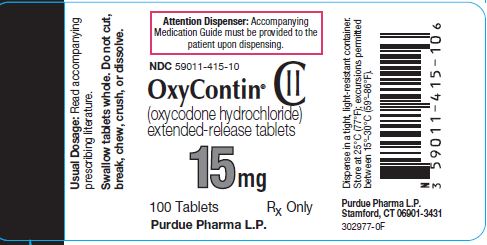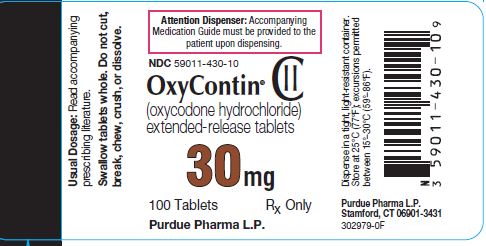Oxycontin
Generic name: oxycodone
Drug class: Narcotic analgesics
Medically reviewed by A Ras MD.
What is Oxycontin?
Oxycontin is a strong prescription pain medicine that contains an opioid (narcotic) that is used to manage pain severe enough to require daily around-the-clock, long-term treatment with an opioid, when other pain treatments such as non-opioid pain medicines or immediate-release opioid medicines do not treat your pain well enough or you cannot tolerate them. It is a long-acting (extended-release) opioid pain medicine that can put you at risk for overdose and death. Even if you take your dose correctly as prescribed you are at risk for opioid addiction, abuse, and misuse that can lead to death.
it is not for use to treat pain that is not around-the-clock. It is not for use in children under 11 years of age who are not already using opioid pain medicines regularly to manage pain severe enough to require daily around-the-clock long-term pain treatment with an opioid.
Description
OXYCONTIN® (oxycodone hydrochloride) extended-release tablets is an opioid agonist supplied in 10 mg, 15 mg, 20 mg, 30 mg, 40 mg, 60 mg, and 80 mg tablets for oral administration. The tablet strengths describe the amount of oxycodone per tablet as the hydrochloride salt. The structural formula for oxycodone hydrochloride is as follows:

The chemical name is 4, 5α-epoxy-14-hydroxy-3-methoxy-17-methylmorphinan-6-one hydrochloride.
Oxycodone is a white, odorless crystalline powder derived from the opium alkaloid, thebaine. Oxycodone hydrochloride dissolves in water (1 g in 6 to 7 mL). It is slightly soluble in alcohol (octanol water partition coefficient 0.7).
Mechanism of Action
Oxycodone is a full opioid agonist and is relatively selective for the mu receptor, although it can bind to other opioid receptors at higher doses. The principal therapeutic action of oxycodone is analgesia. Like all full opioid agonists, there is no ceiling effect to analgesia for oxycodone. Clinically, dosage is titrated to provide adequate analgesia and may be limited by adverse reactions, including respiratory and CNS depression.
The precise mechanism of the analgesic action is unknown. However, specific CNS opioid receptors for endogenous compounds with opioid-like activity have been identified throughout the brain and spinal cord and are thought to play a role in the analgesic effects of this drug.
What is the most important information I should know about Oxycontin?
- Get emergency help right away if you take too much Oxycontin (overdose). When you first start taking Oxycontin, when your dose is changed, or if you take too much (overdose), serious or life-threatening breathing problems that can lead to death may occur.
- Taking Oxycontin with other opioid medicines, benzodiazepines, alcohol, or other central nervous system depressants (including street drugs) can cause severe drowsiness, decreased awareness, breathing problems, coma, and death.
- Never give anyone else your Oxycontin. They could die from taking it. Selling or giving away Oxycontin is against the law.
- Store Oxycontin securely, out of sight and reach of children, and in a location not accessible by others, including visitors to the home.
Who should not take Oxycontin?
Do not take Oxycontin if you have:
- severe asthma, trouble breathing, or other lung problems.
- a bowel blockage or have narrowing of the stomach or intestines.
What should I tell my healthcare provider before taking Oxycontin?
Before taking Oxycontin, tell your healthcare provider if you have a history of:
- head injury, seizures
- liver, kidney, thyroid problems
- problems urinating
- pancreas or gallbladder problems
- abuse of street or prescription drugs, alcohol addiction, or mental health problems.
Tell your healthcare provider if you are:
- pregnant or planning to become pregnant. Prolonged use of Oxycontin during pregnancy can cause withdrawal symptoms in your newborn baby that could be life-threatening if not recognized and treated.
- breastfeeding. Not recommended during treatment with Oxycontin. It may harm your baby.
- taking prescription or over-the-counter medicines, vitamins, or herbal supplements. Taking Oxycontin with certain other medicines can cause serious side effects that could lead to death.
How should I take Oxycontin?
When taking Oxycontin:
- Do not change your dose. Take Oxycontin exactly as prescribed by your healthcare provider. Use the lowest dose possible for the shortest time needed.
- Take your prescribed dose every 12 hours at the same time every day. Do not take more than your prescribed dose in 12 hours. If you miss a dose, take your next dose at your usual time.
- Swallow Oxycontin whole. Do not cut, break, chew, crush, dissolve, snort, or inject Oxycontin because this may cause you to overdose and die.
- Oxycontin should be taken 1 tablet at a time. Do not pre-soak, lick, or wet the tablet before placing in your mouth to avoid choking on the tablet.
- Call your healthcare provider if the dose you are taking does not control your pain.
- Do not stop taking Oxycontin without talking to your healthcare provider.
- Dispose of expired, unwanted, or unused Oxycontin by promptly flushing down the toilet, if a drug take-back option is not readily available. Visit www.fda.gov/drugdisposal for additional information on disposal of unused medicines.
What should I avoid while taking Oxycontin?
While taking Oxycontin do not:
- Drive or operate heavy machinery until you know how Oxycontin affects you. Oxycontin can make you sleepy, dizzy, or lightheaded.
- Drink alcohol, or use prescription or over-the-counter medicines that contain alcohol. Using products containing alcohol during treatment with Oxycontin may cause you to overdose and die.
What are the possible side effects of Oxycontin?
The possible side effects of Oxycontin are:
- constipation
- nausea
- sleepiness
- vomiting
- tiredness
- headache
- dizziness
- abdominal pain
Call your healthcare provider if you have any of these symptoms and they are severe.
Get emergency medical help if you have:
- trouble breathing
- shortness of breath
- fast heartbeat
- chest pain
- swelling of your face, tongue, or throat
- extreme drowsiness
- light-headedness when changing positions
- feeling faint
- agitation
- high body temperature
- trouble walking
- stiff muscles
- mental changes such as confusion
These are not all the possible side effects of Oxycontin. Call your doctor for medical advice about side effects.
You may report side effects to FDA at 1-800-FDA-1088.
How should I store Oxycontin
Store at 25°C (77°F); excursions permitted between 15°-30°C (59°-86°F).
Store Oxycontin securely and dispose of properly.
Dispense in tight, light-resistant container.
Keep out of sight and reach of children.
What are the ingredients in Oxycontin?
Active ingredient: oxycodone hydrochloride
Inactive ingredients: butylated hydroxytoluene, hypromelloses, polyethylene glycol 400, magnesium stearate, titanium dioxide, ferric oxide yellow, FD&C blue no. 2, aluminum oxide, hydroxypropyl cellulose unspecified.
Label
PRINCIPAL DISPLAY PANEL
OXYCONTIN® 10mg Tablets Label
NDC 59011-410-10


OXYCONTIN® 15mg Tablets Label
NDC 59011-415-10


OXYCONTIN® 20mg Tablets Label
NDC 59011-420-10


OXYCONTIN® 30mg Tablets Label
NDC 59011-430-10


OXYCONTIN® 40mg Tablets Label
NDC 59011-440-10



